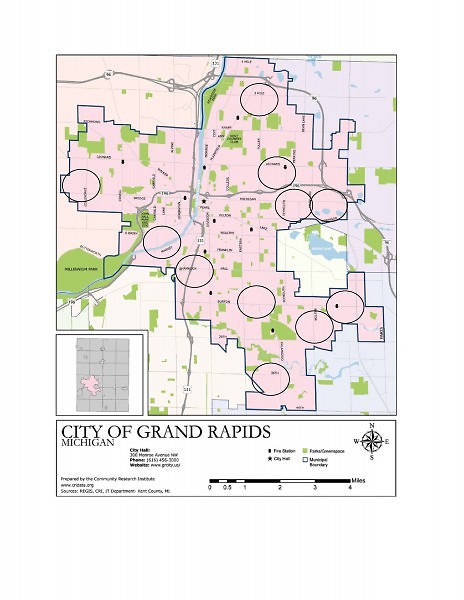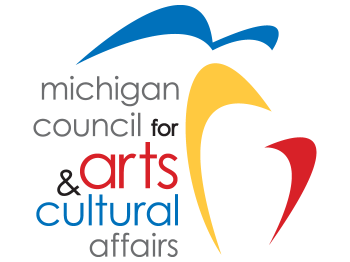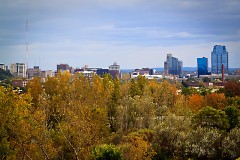We often think about infrastructure in modern cities as a those hardscaped things - roads, bridges, and so on -- that foster productivity and efficiency. But we should also think about a "green" infrastructure that incorporates nature into the landscape as a counterbalance to the fast pace of the city. It is important that city residents have opportunity spend time outdoors and experience the benefits of this mutual interaction.
"Green space [includes] the parks, street-scapes, public spaces, rooftops, and publicly accessible private spaces" in a city, as stated in the mission statement of the Green Grand Rapids Committee. As a basis for comparison, the National Recreation and Park Association (NRPA) recommends that a city has at least 10 acres of green space per one thousand people. Nationally, cities average between 12-15 acres per thousand people. As of this year, Grand Rapids is well behind the average, let alone the recommended, amount of acreage with a mere 7.88 acres per one thousand people, as seen in the Friends of Grand Rapids Parks audit report.
In Grand Rapids the majority of residential locations have an area of green space within half a mile, and as a whole the city comes close to meeting the proximity recommendation set by the NRPA for green space (see accompanying map). However, the current green space does not provide all citizens an opportunity for the recreational and communal benefits that green space should provide. An issue that directly relates to this problem is the cost to maintain green space as a community asset.
The City of Grand Rapids spends $34 on parks per resident per year through taxes, while comparative cities throughout the Midwest, such as Minneapolis and Milwaukee, invest more. Most notably, the city of Milwaukee spends an estimated $177 on parks per resident per year, as reported by Friends of Grand Rapids Parks. As a result, Grand Rapids public parks function on a much tighter budget, which leads to less park maintenance and development.
In addition, Grand Rapids has five percent lower community involvement in programs than the national average of forty percent (as noted in the Friends of Grand Rapids Parks audit). That relatively low involvement increases the difficulty of maintaining a sustainable budget for green space. For the city to reach the national average, almost 10,000 more people would need to participate yearly, which is about five percent of the city's total population.
This problem directly affects the daily lives of citizens who are missing out on the opportunity to experience nature. Indirect effects of this problem include the increase in air and water pollutants with decreasing green space; the increase in noise levels as a result of a decrease in vegetation; the decrease in quality of aesthetic experience with less prevalent green spaces; and the missed opportunity for the city to attract visitors and new residents.
We would argue that the best place to start in addressing the problem of greenspace is the river system in Grand Rapids. A more robust riparian zone around the Grand River and other waterways would accomplish two things: a reduction in water pollution and an enhancement of the city's visual appeal. But whatever the city does to address our issues with greenspace, the starting point is to acknowledge the problem as a priority for our community.
The Rapidian, a program of the 501(c)3 nonprofit Community Media Center, relies on the community’s support to help cover the cost of training reporters and publishing content.
We need your help.
If each of our readers and content creators who values this community platform help support its creation and maintenance, The Rapidian can continue to educate and facilitate a conversation around issues for years to come.
Please support The Rapidian and make a contribution today.


